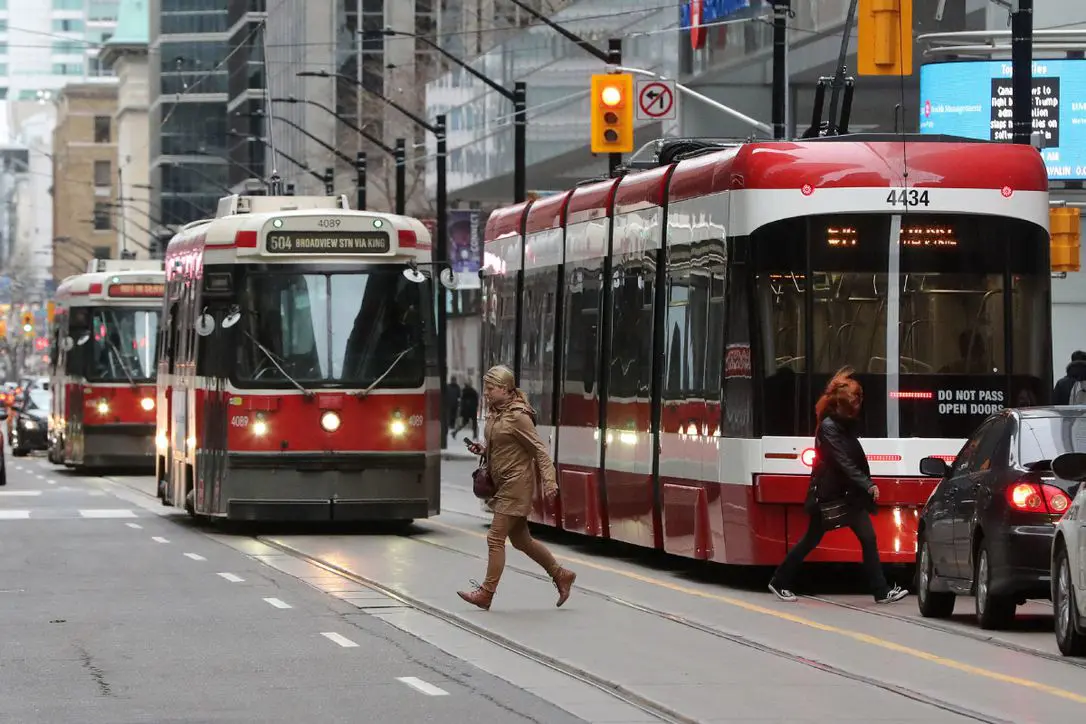Considering Immigration and Transit Planning in Prairie Cities
In this blog post, recent Masters in Planning graduate Abigail McLaren from the University of Manitoba discusses the importance of immigration in transit planning in Canada’s prairie cities.
For my final research project of my master’s degree, I examined recent immigrant settlement patterns and transit planning in Winnipeg, Regina, and Saskatoon, to identify implications for transit equity.[1] Over my time as a student and researcher, I have found that transit equity can be more difficult to incorporate within mid-sized urban centres in Canada due to issues such as financial constraints, low population density, and political climate. Additionally, equity can have multiple definitions and therefore may be left out of transportation planning processes.
I chose to look at transit equity implications for recent immigrants since immigration is a major contributor to Canada’s population growth. Between 2021 and 2022, immigration accounted for nearly 94% of Canada’s population growth (Statistics Canada, 2022a), yet the three cities that have historically welcomed the most newcomers per year (Vancouver, Toronto and Montreal) saw a decline in the number of newcomers between 2016-2021 (Statistics Canada, 2022b). Meanwhile, Winnipeg, Regina, and Saskatoon saw dramatic increases in their immigrant populations in 2021 (Statistics Canada, 2022b). Previous studies on immigration and transportation in Canada have focused on large cities, however as small to mid-sized urban centres such as Winnipeg, Regina, and Saskatoon continue to welcome more newcomers, there needs to be a better understanding of transportation needs in different contexts.
To conduct the research for my project, I used spatial analysis and interviews with transit agency staff. Through mapping, I was able to visualize where recent immigrants are settling in Winnipeg, Regina, and Saskatoon, and how settlement patterns have changed over time, using Statistics Canada census data over a 20-period. I also mapped transit data in two years (approximately 2002 and 2021) to see how bus routes have changed over time within these three cities. Interview participants (n=5) were transit professionals and answered questions on the evaluation strategies and criteria used by transit agencies in making route or network revisions.
Suburban Settlement Shift – How is Transit Responding?
From 2001 to 2021, Winnipeg, Regina, and Saskatoon have seen recent immigrant population rates increase in suburban areas: the highest increase of immigrant population (avg: 10.5%) over time in each city occurred in suburban areas.[1] New census tracts (as of 2021) in Regina and Winnipeg had among the highest average recent immigrant population rates, closely followed by a new census tract (as of 2016) in Saskatoon. In this study, Winnipeg was the only city to demonstrate high proportions of recent immigrant population (at 17.6%) within its central core.

Despite these patterns of settlement, greenfield residential areas with high proportions of recent immigrants have seen little increase in transit service.[2] For instance, nearly half of total transit routes in Winnipeg serviced core census tracts, yet only three out of 87 serviced greenfield neighbourhoods (see Figure 1). Out of all three cities, Regina demonstrated the greatest route provision to newly developed areas (6 of 21 routes; see Figure 2). Out of all three cities, Saskatoon saw the least amount of routes servicing new greenfield areas, yet it demonstrated the greatest increase in the number of routes servicing suburban areas (+7) over time (see Figure 3).


An interesting finding from the interviews was that public engagement is not always used in transit revision processes, although transit agency staff agreed that input from the public is important. All respondents agreed that land use and infrastructure changes, financial feasibility, analysis of capacity and scheduling performance data, and long-term efficiency improvements were the primary factors influencing route revisions – yet none mentioned how riders and their unique equity needs are incorporated within route revision processes. Surprisingly, no responses discussed transit planning in relation to recent immigrants. In most interviews, responses suggested that transit resources were largely focused on supporting economic development, providing equal service across the city, and encourage car users to use transit.
Additionally, there was no clear answer as to how or when stakeholder feedback is solicited for route revisions made apart from master planning or infrastructure projects. One of the main challenges agencies noted in conducting regular public engagement came down to limited budget and resources. In some cases, agencies said they would solicit feedback if they believed nearby residents would be impacted, but it was not clear if this involved engagement or merely used to inform residents. When equity did come up, it was usually related to equitable fare pricing, accessible bus fleets and bus stops, or safety.
Final Thoughts
Findings show that transit service has not kept pace with immigrant settlement in suburban areas within Winnipeg, Regina, and Saskatoon, suggesting that there may be limited options for people without access to a car. Due to the lack of defined processes for route revision, it is unclear as to how or if equity-seeking transit users are captured in ridership data. Without strategies to identify ridership demographics and travel needs, agencies may face difficulties in incorporating equity goals in transit planning. Incorporating equity may also be a challenge if public engagement is infrequently used or under funded. Findings from interviews indicate that equal over equitable service provision is preferred, since it can be measured and align with mobility efficiencies in transit. Choosing to allocate limited resources into transit projects which aim to attract car users, may leave less resources for transit equity improvements. Additionally, by continuing to plan transit around destinations agencies believe riders are frequenting, without engaging with them, neglects to address connectivity needs of other trip types or destinations. As immigration continues to lead population growth across Canada, Prairie cities should consider transit planning implications that extend beyond infrastructure and transit resource management and focus on how they can better serve equity-seeking riders in incremental ways, rather than wait for the large capital projects that may take decades to implement.
Disclaimer
The research described in this piece was not funded or completed as part of the Mobilizing Justice project. The views reflected are those of the author and do not necessarily reflect the views of the Mobilizing Justice project.
References
Statistics Canada. (2022a, September 28). Canada’s population estimates: Age and sex, July 1, 2022. The Daily. https://www150.statcan.gc.ca/n1/en/daily-quotidien/220928/dq220928c- eng.pdf?st=zmniQdaW
Statistics Canada. (2022b, October 26). Immigrants make up the largest share of the population in over 150 years and continue to shape who we are as Canadians. The Daily. https://www150.statcan.gc.ca/n1/en/daily-quotidien/221026/dq221026a- eng.pdf?st=QbxcmNY_
[1] Areas developed between the mid-20th century and turn of the 21st century.
[2] Areas developed within the past 15 years (since 2008).
[1] The full report will made available at https://umanitoba.ca/architecture/department-city-planning/student-work.
You may also like
 Documenting Canada’s Community Response to Transport Poverty: A 5-Year Review
Documenting Canada’s Community Response to Transport Poverty: A 5-Year Review
With the recent release of the Canadian Community Initiatives Addressing Transport Poverty Catalogue, accompanying report, and interactive web map, a multi-year effort… Read More
 Findings from the City of Grand Rapids’ Shared Micromobility Free Fare Pilot Program
Findings from the City of Grand Rapids’ Shared Micromobility Free Fare Pilot Program
The Free Fare Pilot Shared micromobility systems, such as bikeshare and scootershare, are increasingly important to cities’ transportation strategies, as they seek to move… Read More
 The Different Price Tags of Access: Transit, Housing Affordability and Demographics
The Different Price Tags of Access: Transit, Housing Affordability and Demographics
Introduction Building a new transit system? Great for commuters. Even better for housing prices. When cities build transit, nearby land and housing prices often shoot… Read More
